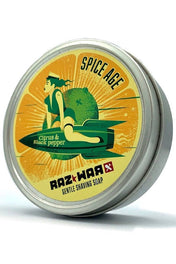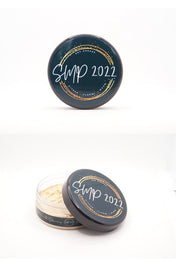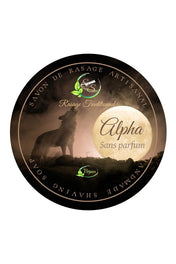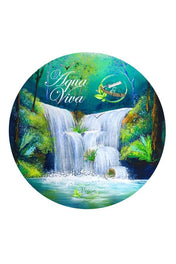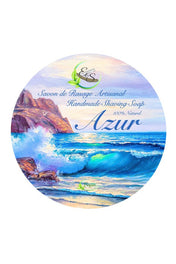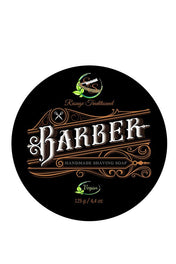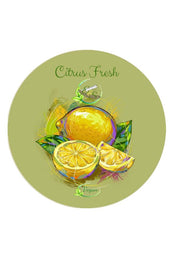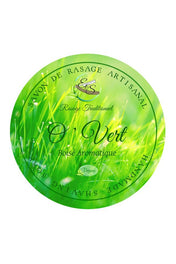How do I prevent rashes and redness after shaving?
I shave wet and regularly suffer from rashes and redness on my neck.
I shave wet and regularly suffer from rashes and redness on my neck.
Try a pre-shave oil or cream in combination with a shaving cream or shaving soap for sensitive skin. After shaving, you can after shave balm against skin irritations.
- If necessary, use unscented shaving products and avoid alcohol-based grooming products.
- After shaving, use a neutral (unscented) after shave balm and/or talcum powder.
- Do you currently use a cartridge razor with 3 or 5 blades (3- or 5-blade)? Switch to the safety razor or safety razor. This razor contains only 1 blade.
- Shave only in the direction of beard growth. Do not shave again against the direction of hair growth. Shave with gentle, light strokes. Do not shave every day but every other day, for example.
- Another tip! Use only a razor that is razor-sharp. Blunt razors pull out the beard stubble. This will give you red spots and skin irritations.
How can I shave even smoother?
I shave wet, but I'm still not really smooth after shaving. How can I shave smoother?
I shave wet, but I'm still not really smooth after shaving. How can I shave smoother?
- The stiffest hairs are on your chin, cheeks and upper lip. So start with the sideburns, cheeks and neck first. This will give the shaving cream more time to soften the beard hairs.
- The smoothest shave is achieved with a classic shaving cream or shaving soap, shaving brush, warm water and a little bit of time. At least 1 minute of shaving cream application and distribution with the shaving brush makes beard hairs softer and softer.
- First, move the razor across your face in the direction of hair growth.
- If it is still not smooth after one shave, apply shaving cream or gel again and now move the blade against the direction of hair growth.
- Perhaps you have heavy beard growth? Then use a pre-shave oil or cream and then a shaving cream or shaving foam for heavy beard growth. These shaving products soften the beard hairs. This gives you a better and smoother shave.
Why should I use a pre-shave cream or oil before shaving?
Pre-shave cream or shaving oil, what is it and what does it do?
Pre-shave cream or shaving oil, what is it and what does it do?
- Pre-shave cream or oil Apply to the face before shaving. Do not rinse off. The shaving cream or the shaving cream goes over the pre-shave product.
- Using a pre-shave oil or cream is personal.
- Pre-shave products prepare the skin for shaving and soften the beard hairs.
- Skin can dry out from using shaving soap or shaving cream. A pre-shave product prevents any drying of the skin by the shaving soap or shaving foam.
- A pre-shave product provides an extra buffer between skin and razor.
- In case of dry skin, a pre-shave provides extra shaving comfort and you will have less shaving irritations afterwards.
How do I prevent razor bumps, pimples or redness after shaving?
I shave wet and I have a lot of bumps, pimples and red chafing around my mouth and on my jaws. Am I using the wrong shaving products?
I shave wet and I have a lot of bumps, pimples and red chafing around my mouth and on my jaws. Am I using the wrong shaving products?
- Pay attention to your shaving technique: don't apply too much pressure while shaving, don't shave the same area too often and don't shave every day (give your skin a day of rest to recover).
- You probably have sensitive skin. Perhaps your current shaving cream or after shave is too aggressive. So use skin-friendly or unscented shaving products. Several shaving products are specifically for sensitive skin.
- Also, do not use shaving products with parabens. Use shaving products with natural ingredients as much as possible.
- If necessary, use a after shave balm instead of a regular after shave with alcohol.
- Another tip! Use only a razor that is razor-sharp. Blunt razors pull out the beard stubble. This causes redness and skin irritation.
- Switch from the modern multi-blade cartridge razor to the safety razor.
When do you use an after shave or after shave balm?
After shaving, I either use an alcohol-based after shave, which causes a burning sensation and skin irritation, or an after shave balm which, however, leaves a slightly greasy film on my skin. So what is the best product to use to avoid these discomforts?
After shaving, I either use an alcohol-based after shave, which causes a burning sensation and skin irritation, or an after shave balm which, however, leaves a slightly greasy film on my skin. So what is the best product to use to avoid these discomforts?
- The choice of a alcohol-based after shave splash or a after shave balm is personal, of course. It depends on what you like yourself or what is good for your skin.
- In case of sensitive or dry skin, it is wise to use a caring, soothing, alcohol-free and neutral (unscented) product after wet shaving, such as an after shave balm.
- After shaving, skin pores are open. After shave with alcohol closes the pores and disinfects the skin. But it stings for a few seconds and it can (slightly) dry or irritate the skin.
- Instead of after shave, you can better after shave balm or gel use. These products have a nurturing and calming effect.
- In case of oily skin, an after shave balm may leave a slightly oily film on the skin.
- In the case of normal or oily skin, an after shave with alcohol can possibly be used. After shave with alcohol closes the pores and disinfects the skin. As the alcohol evaporates, it gives a pleasant cooling effect. The skin gets a fresh healthy look.
How do I prevent shaving wounds during shaving?
I have a lot of small wounds during wet shaving. How can I prevent this?
I have a lot of small wounds during wet shaving. How can I prevent this?
- Pay attention to your shaving technique: don't apply too much pressure while shaving, don't shave the same area too often and don't shave every day (give your skin a day of rest to recover).
- Use only razor blades that are razor sharp. Replace your razor blade in time. A razor blade usually lasts about a week. Blunt razor blades cause wounds and skin irritation.
- If necessary, use a pre shave cream or oil before shaving. Pre shave provides an extra buffer between skin and razor.
- Take your time. Let the shaving cream soak in for 1 minute. This will soften and soften the beard hairs. As a result, you need to apply less pressure with the razor. This makes for a more comfortable shave. And shave with gentle light movements.
- Bleeding after shaving can be stopped with alum pins. These are convenient, hygienic and stop bleeding immediately.
What is the difference between shaving soap, shaving cream and shaving gel?
I want to start wet shaving. But what is the difference between shaving soap, shaving cream and shaving gel?
I want to start wet shaving. But what is the difference between shaving soap, shaving cream and shaving gel?
- The basis of a lot of shaving and soap products is glycerin, (essential) oils, fats and possibly added fragrance or perfume ingredients.
- Shaving soap has a solid form and hard composition. Shaving soap should be applied using warm water and the shaving brush.
- Shaving Cream is creamy. Shaving cream can be used either by hand or the shaving brush. You get the best shaving cream result with warm water and the shaving brush.
- Shaving gel is a gel and transparent. Shaving gel should be applied by hand. Shave gel is suitable for touching up the edges of the beard.
- Shaving oil is pure oil, usually a blend of several essential oils, and is applied by hand. It provides a thin film and protects the skin. Shaving oil is also suitable for touching up the edges of the beard.
- These shaving products cause the beard hairs to soften and stand up. Shaving oil does not soften the beard hairs as compared to shaving soap or shaving cream, but all provide a protective film on the skin against the razor.
- All four shaving products have conditioning properties and ultimately provide a smooth shave.
Are shaving products with natural ingredients better for your skin?
Why do several shaving products contain only natural ingredients and essential oils?
Why do several shaving products contain only natural ingredients and essential oils?
- Most common, inexpensive shaving and skin care products contain many synthetic or chemical ingredients that can lead to skin allergies or shaving and skin irritations.
- The risk of allergies and irritations is greater with shaving because a thin layer of skin is removed during shaving, making the skin very fragile and sensitive.
- More and more shaving products therefore contain only natural and skin-friendly ingredients and essential oils.
What are the properties of Lavender, Sandalwood and Citrus oils in shaving products?
What is the typical property of Lavender, Sandalwood and Citrus oils in various shaving products?
What is the typical property of Lavender, Sandalwood and Citrus oils in various shaving products?
- Lavender Has a fresh floral fragrance. It soothes, calms and conditions the skin during and after shaving. It has mild antiseptic properties and is particularly suitable for sensitive skin.
- Sandalwood Has a powerful woody and masculine scent. It moisturizes and conditions the skin during and after shaving. It has mild antiseptic properties and is particularly suitable for dry skin.
- Citrus Has a fresh citrus fragrance. It refreshes and stems bleeding. It has mild antiseptic properties and is particularly suitable for normal and oily skin.
How do I prevent ingrown beard hairs?
I suffer a lot from ingrown beard hairs. What can I do about it?
I suffer a lot from ingrown beard hairs. What can I do about it?
- Many men, especially those with frizzy or curly hair, suffer from ingrown beard hairs.
- To prevent ingrown hairs you should not shave your beard hairs too short.
- Do not apply too much pressure on the razor while shaving. Too much pressure can cause the beard hairs to be shaved off too short.
- Shave with a safety razor instead of a modern cartridge multi-blade razor.
- Do not shave daily but every other day.
- Shave only with the growth direction of the beard hairs. Above all, do not shave against the direction of hair growth.
- Before shaving, cleanse the skin with an exfoliating cleansing gel.
- If necessary, use Special exfoliating creams that can prevent ingrown hairs.
Which is better? Wet or dry shaving?
What determines the choice of wet or dry shaving? Which is better?
What determines the choice of wet or dry shaving? Which is better?
- Most men prefer wet shaving to dry shaving with an electric device.
- Wet shaving is more comfortable and smooth compared to electric shaving.
- Wet shaving provides a fresh and clean feeling on the skin.
- If you have skin problems or you have sensitive skin then wet shaving is better.
- If you have easy skin you can also opt for dry shaving.
- Alternating wet and dry shaving regularly is not convenient for most skin types. The skin has to get used to it each time. This increases the risk of red skin or irritation.
What are helpful shaving tips for shaving heavy beard growth?
I have heavy beard growth. How do I get a really good close shave?
I have heavy beard growth. How do I get a really good close shave?
- Take a shower before shaving. The warm water softens the beard hairs.
- Always clean with lukewarm water instead of hot water.
- Do not shave with blunt razor blades. Replace the razor blade on time.
- The smoothest shave is achieved with a classic Shaving soap or Shaving Cream in combination with warm water and shaving brush.
- Use a pre shave cream or oil. Do not rinse off the pre shave. Put the shaving cream over the pre shave and only then shave.
- Take your time. It is important to soften the beard hairs. Start applying or foaming the shaving cream on the face for 1 minute first and only then go for a shave.
- First, move the razor across your face in the growth direction of the hairs.
- If it is still not smooth after one shave, apply shaving cream or gel again and now move the blade against the direction of hair growth.
- With one hand, pull the skin taut while shaving. This makes the beard hairs stand up and makes shaving off easier.
- If necessary, use a classic safety razor or scraper. with a open comb shaving head.
What are helpful shaving tips for shaving dry skin?
I suffer from dry skin. Now what are helpful shaving and skin care tips for me?
I suffer from dry skin. Now what are helpful shaving and skin care tips for me?
- Use a mild cleansing gel instead of ordinary soap.
- Before shaving, cleanse the skin with a cleansing gel instead of ordinary soap.
- Always clean with lukewarm water instead of hot water.
- Before shaving, use a pre shave cream or oil. Do not rinse off the pre shave. Put the shaving cream over the pre shave and only then shave.
- Use an unscented and moisturizing Shaving cream or Shaving soap.
- After shaving, use a after shave balm and possibly after the after shave treatment an moisturiser (moisturizer).
- Do not use after shave or skin care products containing alcohol.
What are helpful shaving tips for shaving oily skin?
I suffer from oily skin. Now what are helpful shaving and skin care tips for me?
I suffer from oily skin. Now what are helpful shaving and skin care tips for me?
- Both morning and evening, cleanse the face with a cleansing gel. After shaving, use an absorbent after shave balm that keeps grease (sebum) production under control throughout the day.
- If necessary, use an alcohol-based after shave instead of an after shave balm.
- Scrub at most once or twice a week the face with a scrub gel. Never scrub right before or after shaving. And avoid the eye area.
What are helpful shaving tips for shaving combination skin?
Some parts of my face are dry and others are oily again. So what are helpful shaving and skincare tips for me?
Some parts of my face are dry and others are oily again. So what are helpful shaving and skincare tips for me?
- Use a mild cleansing gel instead of ordinary soap.
- Always clean with lukewarm water instead of hot water.
- Use an unscented and moisturizing shaving cream or soap.
- On dry parts of the face only, use a moisturizer (moisturizer) instead of a regular after shave balm.
- Use cleansing pads for the oily parts of the face if necessary.
What are helpful shaving tips for shaving sensitive skin?
I have sensitive or easily irritated skin. What are helpful shaving and skin care tips for me?
I have sensitive or easily irritated skin. What are helpful shaving and skin care tips for me?
Sensitive skin can often tolerate only a few shaving and skin care products or specific ingredients. Here are some recommendations:
- Avoid "harsh" products when cleaning, such as soaps and alcohol-based grooming products.
- Prefer unscented, hypoallergenic and paraben-free products.
- Below are some useful shaving and skin care tips:
Showering and shaving, which order is best?
Should I shower first and then shave or shave first and then shower? Which order is best?
Should I shower first and then shave or shave first and then shower? Which order is best?
- There is no correct order. The correct order is personal.
- Showering beforehand softens the beard hairs. This makes for an easier shave and less shaving irritation.
- Warm shower water removes dead skin cells and degreases the skin. This can cause shaving irritation during or after shaving.
- In case of dry skin, it may be better to shave first and shower after shaving.
- Shave first and then shower, the warm shower water soothes the skin after shaving.
Why should I use alum?
Should I use alum to stem bleeding or should I use alum as an after shave treatment? And how should I use it?
Should I use alum to stem bleeding or should I use alum as an after shave treatment? And how should I use it?
- A alum stick is concentrated alum in the form of a pen. This alum pen is suitable for sealing shaving wounds and instantly stopping bleeding.
- Wet the alum marker with cold water and dab the marker on the shaving wound.
- There are also alum blocks. An alum block is also made of alum, but less concentrated. An alum block is used as part of the after shave treatment. Shaving soaps are alkaline; alum is an acid. Alum neutralizes soap components in the skin pores, it disinfects and it has an astringent effect. Astringent means that the skin pores close. In short, an alum block normalizes the pH of the skin after shaving.
- How do you use to alum block? After shaving, rinse the face with cold water. Then apply an alcohol-based after shave splash. And finish the after shave treatment with an alum block. Wet the alum block with cold water and gently rub it over the shaved area. Avoid the eye area. Do you prefer to use a conditioning after shave balm after shaving? Then use the alum block first and then the after shave balm after shaving.
Showering and shaving, which order is best?
Should I shower first and then shave or shave first and then shower? Which order is best?
Should I shower first and then shave or shave first and then shower? Which order is best?
- There is no correct order. The correct order is personal.
- Showering beforehand softens the beard hairs. This makes for an easier shave and less shaving irritation.
- Warm shower water removes dead skin cells and degreases the skin. This can cause shaving irritation during or after shaving.
- In case of dry skin, it may be better to shave first and shower after shaving.
- Shave first and then shower, the warm shower water soothes the skin after shaving.
Why should I use talcum powder?
Why should I use talcum powder as an after shave treatment? And how should I use it?
Why should I use talcum powder as an after shave treatment? And how should I use it?
- Talcum powder Calms and soothes the skin after shaving. And it absorbs excess sebum and sweat throughout the day.
- Use talcum powder as part of the after shave treatment.
- After shaving, rinse the face with cold water. Then use an alcohol-based after shave splash or an alcohol-free after shave balm. Next, use an alum block if necessary to neutralize soap ingredients and to disinfect the skin. Finally, rub a small amount of talcum powder in your hands and spread the talcum powder over the shaved area.










